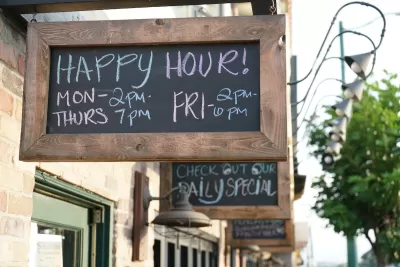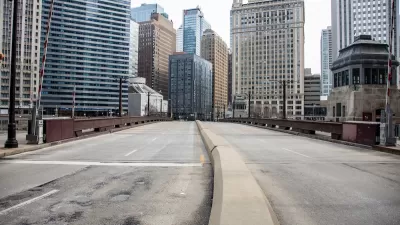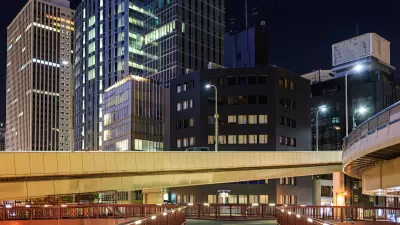More than 20 states have laws banning or limiting happy hours at bars and restaurants. Now, some are revisiting these regulations in an effort to boost commerce in struggling downtown districts.

Some states are reevaluating their restrictions on downtown happy hours at bars and restaurants in an attempt to bring more people — and money — back to floundering downtown economies.
According to a Route Fifty article by Kaitlyn Levinson, happy hours were banned or restricted in some states after a rash of high-profile drunk driving deaths in the 1980s. However, research has not borne out a connection between discounted alcohol hours and higher car crash rates.
Now, some states are looking to expand happy hours or reduce restrictions to encourage more business at downtown establishments. In Massachusetts, a proposal to overturn a 1984 law banning happy hours awaits passage from the state’s House of Representatives.
Some cities are also establishing outdoor drinking zones where people can walk around with alcoholic beverages. “The ‘sip and stroll’ model could even have a bigger economic impact than expanded happy hour laws,” Levinson writes.
FULL STORY: Can happy hour attract people downtown again?

Trump Administration Could Effectively End Housing Voucher Program
Federal officials are eyeing major cuts to the Section 8 program that helps millions of low-income households pay rent.

Planetizen Federal Action Tracker
A weekly monitor of how Trump’s orders and actions are impacting planners and planning in America.

Ken Jennings Launches Transit Web Series
The Jeopardy champ wants you to ride public transit.

Rebuilding Smarter: How LA County Is Guiding Fire-Ravaged Communities Toward Resilience
Los Angeles County is leading a coordinated effort to help fire-impacted communities rebuild with resilience by providing recovery resources, promoting fire-wise design, and aligning reconstruction with broader sustainability and climate goals.

When Borders Blur: Regional Collaboration in Action
As regional challenges outgrow city boundaries, “When Borders Blur” explores how cross-jurisdictional collaboration can drive smarter, more resilient urban planning, sharing real-world lessons from thriving partnerships across North America.

Philadelphia Is Expanding its Network of Roundabouts
Roundabouts are widely shown to decrease traffic speed, reduce congestion, and improve efficiency.
Urban Design for Planners 1: Software Tools
This six-course series explores essential urban design concepts using open source software and equips planners with the tools they need to participate fully in the urban design process.
Planning for Universal Design
Learn the tools for implementing Universal Design in planning regulations.
Ada County Highway District
Clanton & Associates, Inc.
Jessamine County Fiscal Court
Institute for Housing and Urban Development Studies (IHS)
City of Grandview
Harvard GSD Executive Education
Toledo-Lucas County Plan Commissions
Salt Lake City
NYU Wagner Graduate School of Public Service





























